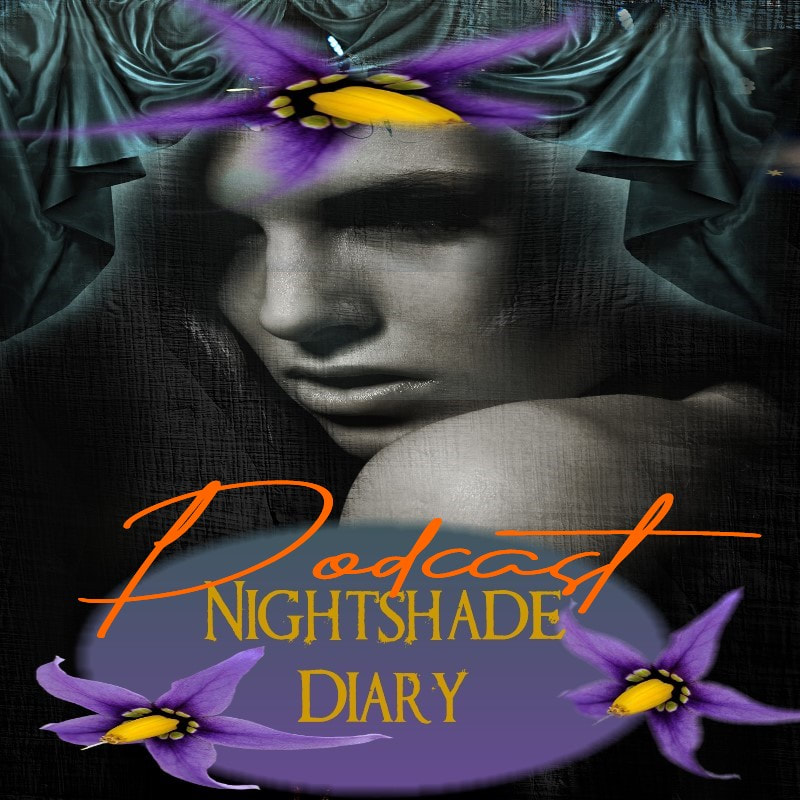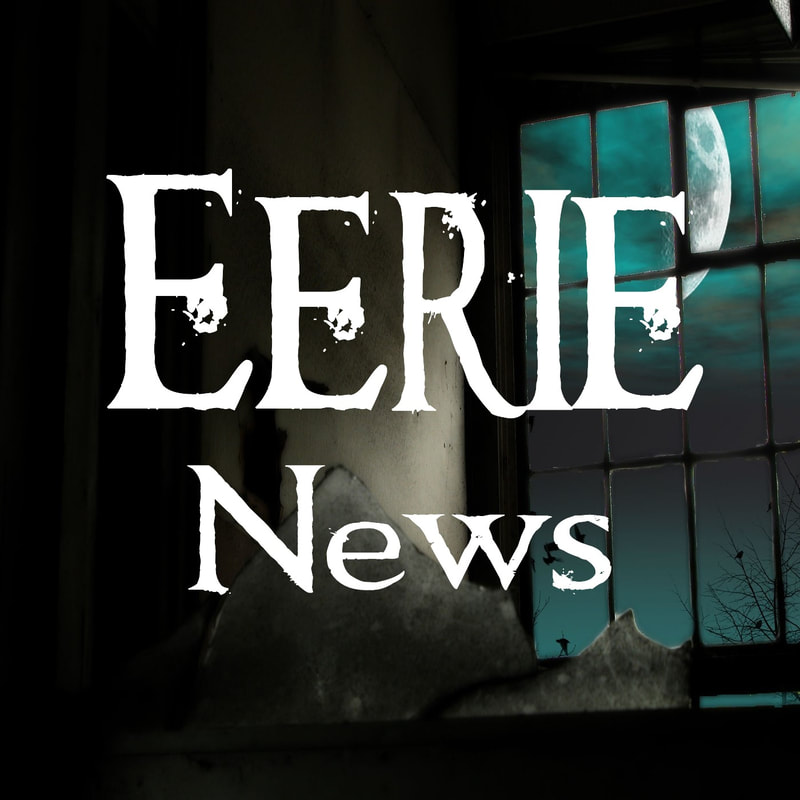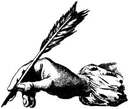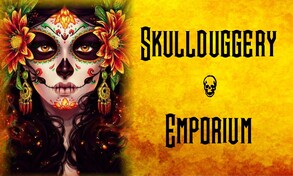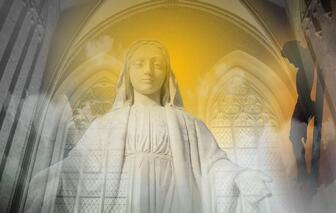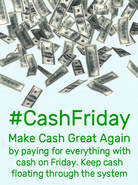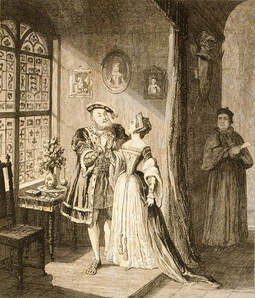 By M.P. Pellicer | Stranger Than Fiction Stories It's not hard to believe a woman, who started out as a mistress, became the wife, and was ultimately killed by her husband does not lie easy in her grave. The lady's name is Anne Boleyn. 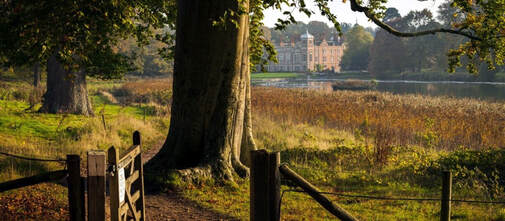 Blickling Hall in Suffolk where Anne Boleyn was born Blickling Hall in Suffolk where Anne Boleyn was born Anne was born in an old medieval manor around 1500. Her great-grandfather, Sir Geoffrey Boleyn bought the Tudor house in 1452. A structure had been erected there since the time of Edward the Confessor on 6,000 acres of land. About 100 years later, Sir Henry Hobart built Blickling Hall in Norfolk on the site of the old manor house. Anne's shade has been seen throughout the years, and May 19, when she met her death in the Tower of London, in 1536 is the most common date of her sighting. On the National Trust's website her appearance is described thus: As night falls, Anne Boleyn’s ghost rides up to the house, in a coach drawn by a headless horseman, with her own head on her lap. The moment the coach arrives in front of the house it vanishes into thin air. 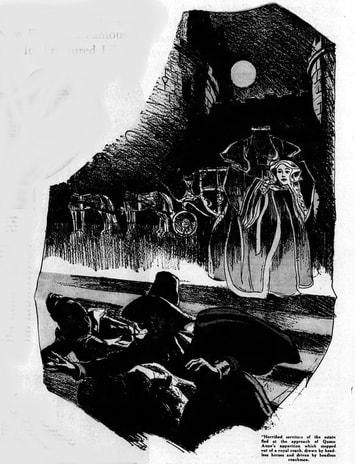 The Haunting of Blickley Hall (Source - Detroit Free Press) The Haunting of Blickley Hall (Source - Detroit Free Press) Blickling Hall is also haunted by Anne's father, Sir Thomas Boleyn who lost two children to Henry's executioner. Sir Henry Hobart who built Blickling is another ghost who makes his presence known on the anniversary of his death by groaning from the West Turret bedroom. Henry VIII seemed especially attracted to the Boleyn women. He was involved with Anne's sister Mary, and according to Sir George Throckmorton he was involved also with Elizabeth Boleyn their mother, even though Henry denied the relationship with Elizabeth. Mary Boleyn became Henry's mistress even though she was married to a courtier named William Carey. It was rumored that one or both of her children were fathered by Henry. Two years after Mary's marriage in 1520, Anne returned from the French court, where it was rumored she was engaged in many sexual liaisons, and the French king referred to her as "The English Mare". Anne joined the royal court as one of Queen Catherine of Aragon's maids-of-honor. By 1526, Henry was in pursuit of Anne, however she refused to become his mistress. This propelled him to seek an annulment from his queen. Anne was crowned Queen of England in June, 1533, and gave birth to Princess Elizabeth on September 7, 1533. 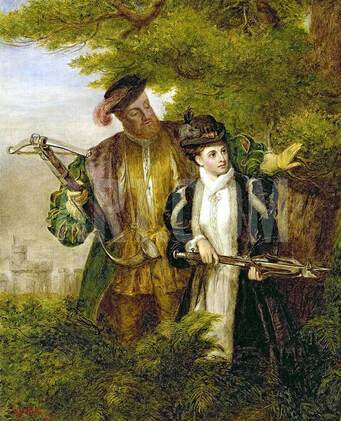 King Henry and Anne Boleyn Deer shooting in Windsor Forest (c.1903, Wm. Powell Frith) King Henry and Anne Boleyn Deer shooting in Windsor Forest (c.1903, Wm. Powell Frith) Despite all the charges used to bring about Anne Boleyn's fate, it seemed the failure to produce a male heir for the crown was her undoing. Not that it did her much good, but according to Tudor expert Sandra Vasoli, evidence has been unearthed that Henry expressed regret of his hand in Anne's death. A message read: "The king acknowledges with great grief at his death the injuries he had done to the Lady Anne Boleyn and her daughter." The originator of the writing was a Franciscan friar, Andre Thevet, who lived at the friary attached to Greenwich Palace. He would have been 32 years old with Henry VIII died. He regularly heard the confessions of English courtiers. Henry's true love though was thought to be Catherine of Aragon, whose failure to produce a male heir propelled him to set her aside, even though the annulment he sought was never recognized by the Roman Catholic Church. Ironically Catherine died six months before Anne's execution. Anne was never accepted by the common people. They considered her a prostitute and called her “the great whore”. She was detested because Catherine of Aragon had been so loved, and they blamed her for alienating the king's affection. According to Sylvia Soberton, Elizabeth Holland, one of Anne's ladies-in-waiting probably stayed with her at the Tower during her incarceration. Bessie Holland was present during Anne's coronation. She was also the mistress of the Duke of Norfolk, Anne's uncle, which also explains how she was appointed as a lady in waiting to the queen. Later she married Henry Reppes and became known as Elizabeth Reppes. Anne also had confidantes, which turned out to be spying on her while she was imprisoned in the Tower. Soberton said four women attending Anne would pass information on to Sir William Kingston, the Constable of the Tower. The women were Mary, Kingston's wife; Margaret Coffin, wife of Anne's master of the horse; Lady Boleyn, Anne's aunt; and Mrs. Stoner who may have been in charge of the behavior of the maids of honor. Even if Anne suspected that these women were spying on her, she talked frequently about subjects which led to the arrest of five men, and strengthened the charges against her. On May Day, Anne visited Greenwich with Henry to watch a tilting match. The next day she along with others were arrested on a charge of treason. She was beheaded 17 days later. 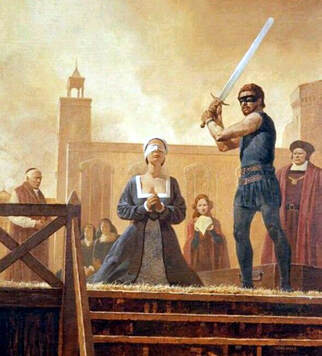 The execution of Anne Boleyn The execution of Anne Boleyn Anne's ghost has been seen in different places, starting with Blickling Hall, her birthplace; Hever Castle, her childhood home; Hampton Court, Windsor Castle; The Tower of London, Salle Church where her body was allegedly moved to after her original burial in the Chapel of St. Peter ad Vincula in the Tower of London (supposedly she was buried in secret under a black slab near where her Boleyn ancestors lay in repose); and Marwell Hall where the Seymours lived between 1530-1638. Marwell Hall at the Yew Tree Walk is where Henry VIII and Jane Seymour her rival, strolled while she was being held at the Tower of London. Henry wed Jane Seymour 11 days after Anne's execution. At Hampton Court she is seen wearing a blue dress. This is the same place Jane Seymour died 15 months after her marriage, and just a few days after she gave birth to Prince Edward. Katherine Howard, Henry's fifth wife, who also met the executioner by Henry's order, is said to haunt Hampton Court. 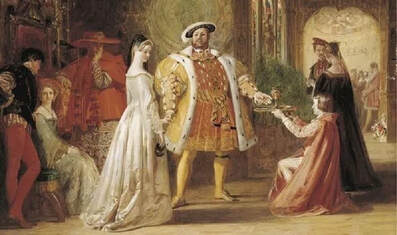 Henry's marriage to Anne Boleyn caused a schism with the Catholic Church Henry's marriage to Anne Boleyn caused a schism with the Catholic Church Anne's ghost has been seen standing at a window in the Dean's Cloister at Windsor Castle. There she keeps company with her daughter Elizabeth I and Henry, both which have been heard and sighted. At Blickling Hall, it's not only Anne but her brother George Boleyn, Lord Rochford, who is seen being dragged by four headless horses. His headless apparition is seen wandering around the estate. In some stories the driver of the coach that bring Anne to Blickling Hall is her father Sir Thomas Boleyn. Once he drops her off he continues on his way, pursued by screaming demons that curse him for his betrayal. He is forced to flee over 12 bridges that lie between Wroxham and Blickling for a millennium as a penance. Hever Castle, where Anne grew up was built in the 13th century. When the Boleyn family bought the castle in the 16th century they rebuilt much of the castle. Anne is seen every Christmas Eve crossing the bridge over the River Eden. She's also seen standing under the great oak where Henry wooed her. The Tower of London is Anne's favorite haunt. It is a place soaked in suffering and blood built by William the Conqueror in 1078. Anne has been seen in the White Tower, the Queen's house, Tower Green where the scaffold was erected and the Chapel of St. Peter ad Vincula. Nicholas Sander, a recusant born in 1530, described Anne this way: Anne Boleyn was rather tall of stature, with black hair and an oval face of sallow complexion, as if troubled with jaundice. She had a projecting tooth under the upper lip, and on her right hand, six fingers. There was a large wen under her chin, and therefore to hide its ugliness, she wore a high dress covering her throat. In this she was followed by the ladies of court, who also wore high dresses, having before been in the habit of leaving their necks and upper portion of their persons uncovered. She was handsome to look at, with a pretty mouth. 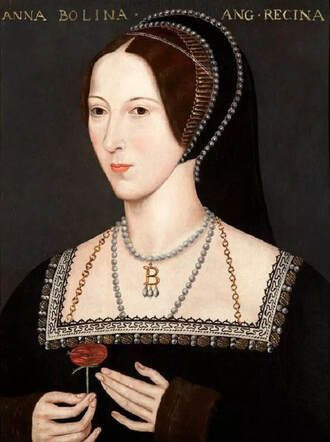 Portrait of Anne Boleyn Portrait of Anne Boleyn In 1817, a sentry at the White Tower died from a heart attack after seeing the ghost of Anne Boleyn on a staircase. In 1864, a guard outside the Queen's House saw a woman in white, veiled in mist. She wore a gown from Tudor times and a French hood, but she had no face. He challenged the figure which turned toward him. He thrust forward with his bayonet and it passed through the figure. He fainted. Later he was court-martialed for falling asleep during his watch, however he was found not guilty when other eyewitnesses said they had seen the headless woman on Tower Green that same night. An officer saw the form from a window in the Bloody Tower, and he heard the sentry yelling and saw him thrust his bayonet through the misty figure. The ghost passed through the bayonet and the sentry himself. In the Chapel Royal of St. Peter ad Vincula, where Anne is supposedly buried, had another sighting in 1882. A Captain of the Guard saw a light burning in the locked chapel. It was very late at night. He found a ladder and looked in through the chapel window. He described it thus: Slowly down the aisle moved a stately procession of Knights and Ladies, attired in ancient costumes; and in front walked an elegant female whose face was averted from him, but whose figure greatly resembled the one he had seen in reputed portraits of Anne Boleyn. After having repeatedly paced the chapel, the entire procession together with the light disappeared. 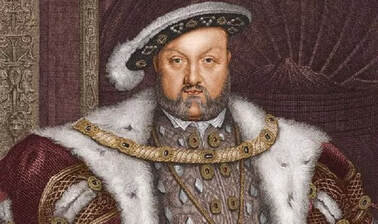 Henry VIII has become infamous for his six wives and his execution of two of them Henry VIII has become infamous for his six wives and his execution of two of them In 1929, Anne Boleyn's shade was reported at a new golf course in London. She was said to be along "Boleyn Walk", a long avenue adjoining the 16th and 17th fairways. This route led to the old hunting lodge. She was seen in the shade of the trees even in daytime. Once this place was the Bishop's Palace, which was a favorite hunting ground of Henry VIII. The ruins of his hunting lodge adjoined one of the tees on the new course. Located in Surrey, the course was the Addington Palace Golf Club. It was built in 1772, by Alderman Tredthick, Lord Mayor of London. However the site once had another house owned by the family of Legh built during Norman times. In 1807, the manor and lands were bought for the Archbishop of Canterbury, and for more than 100 years the Archbishops lived there, and five of them were buried in the park. In 1907, the palace and 1,200 acres was bought by the late Mr. English a South African millionaire. He improved it, and an architect was converting the building to a club house, including a conversion of the chapel which he stated had never been consecrated, into a dining room. 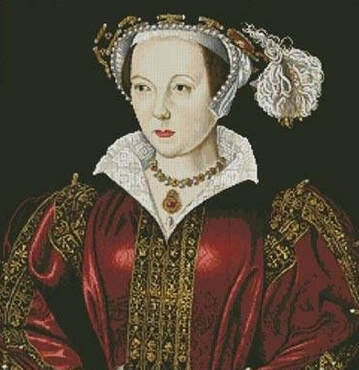 Elizabeth Howard Boleyn, Anne's mother was once rumored to have been pursued by Henry VIII, however he denied this. Elizabeth Howard Boleyn, Anne's mother was once rumored to have been pursued by Henry VIII, however he denied this. It's believed the charges again Anne Boleyn were manufactured in order for Henry to marry Jane Seymour. Many believe she would have been too worldly to risk her position as queen, and the paternity of any heir she could produce, including the Princess Elizabeth by being unfaithful. But perhaps Anne faced a dire problem that forced her to take a lover, spurred by expediency. Henry, once fit was in his mid 40s during a time when the average lifespan was 35 years of age. By the time of their marriage, Henry was not the man he used to be. In 1527, he injured his foot and the same year he suffered from a sore leg. This is believed to be the first time a reference was made to an ulcerated wound on his thigh. In January, 1536, he was unseated during a joust, and the horse landed on top of him. He was unconscious for two hours, and his legs were hurt, possibly fractured. Anne miscarried a pregnancy shortly after the incident. This was the third pregnancy she lost. Henry suffered from headaches after the head injury, and his behavior deteriorated. The painful wound in his thigh returned. The ulcers were purulent and seeped. He had also gained a lot of weight. Perhaps visits from Henry to Anne's bed were few and far between. George Bernard, a history professor at Southampton University examined a poem written in 1545, nine years after Anne's execution. It was written by Lancelot de Carles, the French ambassador to Henry's court. It is titled, A letter containing the criminal charges laid against Queen Anne Boleyn of England, and suggest she was guilty of adultery after all. It describes where Anne was said to "despise her marriage" and had "malice against the king." The indictment said that "by base conversations and kisses, touching, gifts and other famous incitations" she seduced men. Mark Smeaton, Sir Henry Norris, Sir Francis Weston and Sir William Brereton were accused of adultery, along with Anne's brother George. According to Bernard the poem indicates that Anne's indiscretions were revealed after an argument between a privy counselor and his sister, who he accused of promiscuity. She pointed out the queen was much worse, to "a much higher fault that is much more damaging". The professor believes the woman was Elizabeth, Countess of Worcester. Comments in contemporary letters backed up the poem. The countess was one of Anne Boleyn's ladies in her privy chamber. She testified against Anne Boleyn claiming she engaged in several adulterous acts. Bernard said, "It's not that I've discovered the poem for the first time — it's been known to scholars because an edition was printed in the Twenties — but on the whole scholars have dismissed it because it's a literary source. But it seems to me that it presents a plausible scenario — we can identify the accuser as the Countess of Worcester and we can link her to the queen." Long before her arrest, Anne probably suspected only a pregnancy with a fifty-percent chance of producing a male would assure her future as the queen. Wherever the truth lies, if regrets are an ingredient for a haunting, Anne Boleyn had plenty to spare.
0 Comments
Your comment will be posted after it is approved.
Leave a Reply. |
Stranger Than Fiction StoriesM.P. PellicerAuthor, Narrator and Producer Archives
July 2024
Categories
All
|
Stories of the Supernatural
- Stories of the Supernatural
- Miami Ghost Chronicles
- M.P. Pellicer | Author
- Stranger Than Fiction Stories
- Eerie News
- Supernatural Storytime
-
Astrology Today
- Tarot
- Horoscope
- Zodiac
-
Haunted Places
- Animal Hauntings
- Belleview Biltmore Hotel
- Bobby Mackey's Honky Tonk
- Brookdale Lodge
- Chacachacare Island
- Coral Castle
- Drayton Hall Plantation
- Jonathan Dickinson State Park
- Kreischer Mansion
- Miami Biltmore Hotel
- Miami Forgotten Properties
- Myrtles Plantation
- Pinewood Cemetery
- Rolling Hills Asylum
- St. Ann's Retreat
- Stranahan Cromartie House
- The Devil Tree
- Trans-Allegheny Lunatic Asylum
- West Virginia Penitentiary
- Paranormal Podcasts
"When misguided public opinion honors what is despicable and despises what is honorable, punishes virtue and rewards vice, encourages what is harmful and discourages what is useful, applauds falsehood and smothers truth under indifference or insult, a nation turns its back on progress and can be restored only by the terrible lessons of catastrophe."
- Frederic Bastiat
- Frederic Bastiat

Copyright © 2009-2024 Eleventh Hour LLC. All Rights Reserved ®
DISCLAIMER
DISCLAIMER
 RSS Feed
RSS Feed


